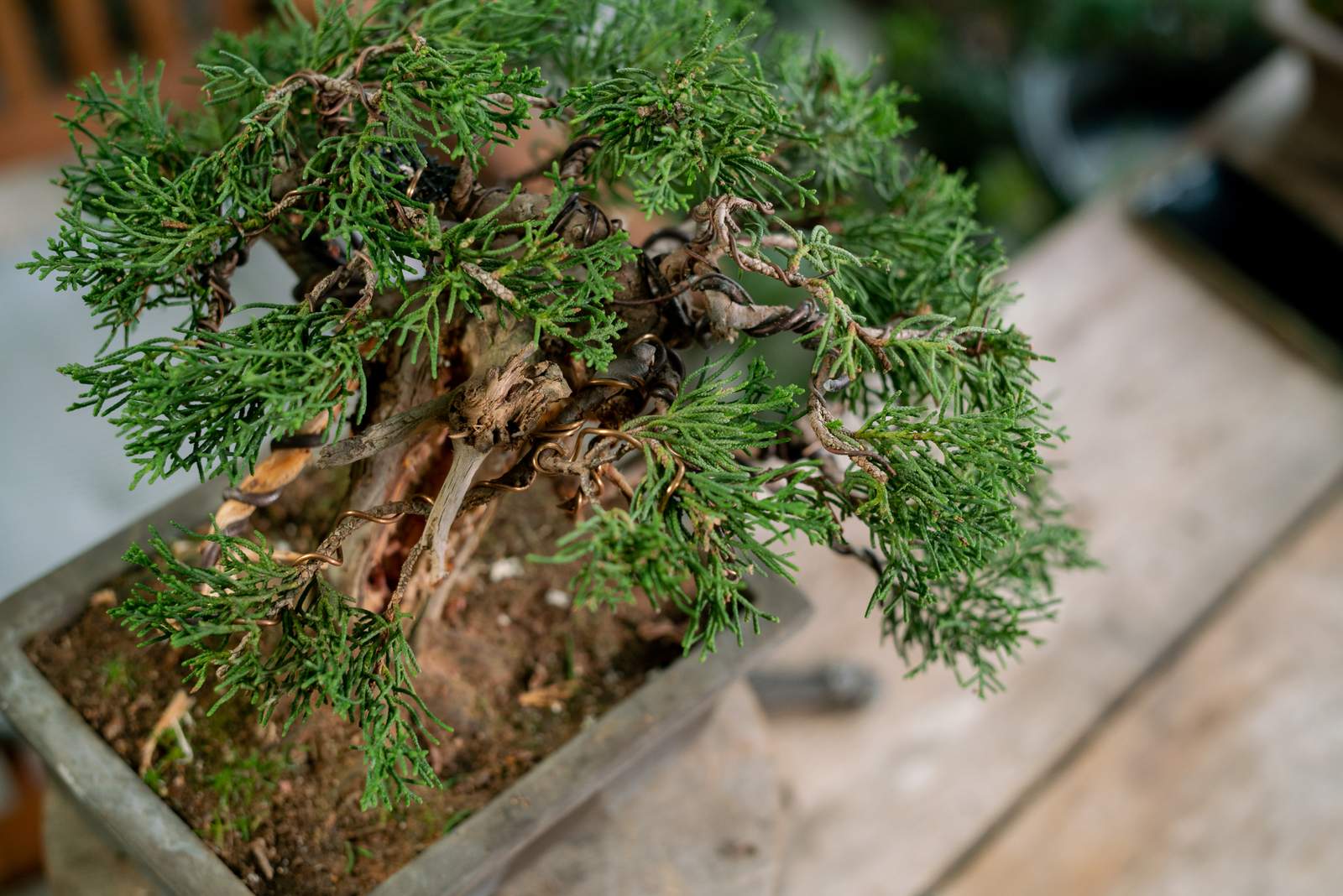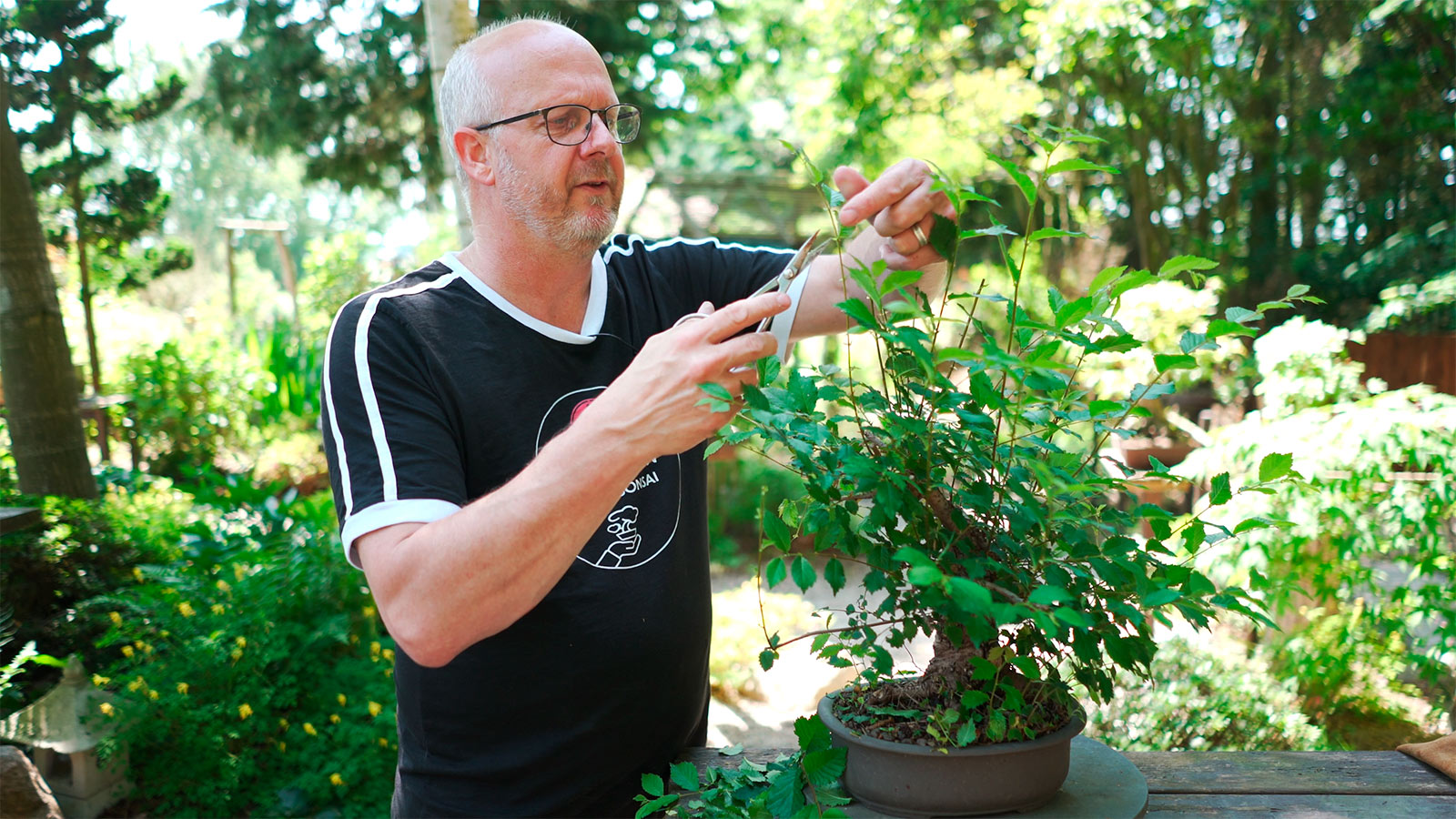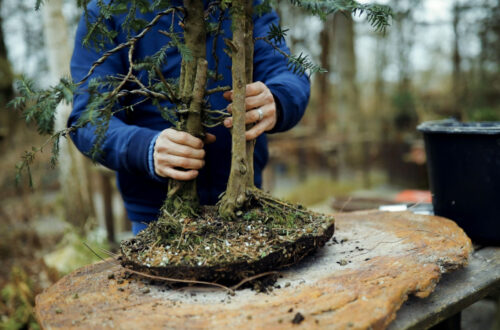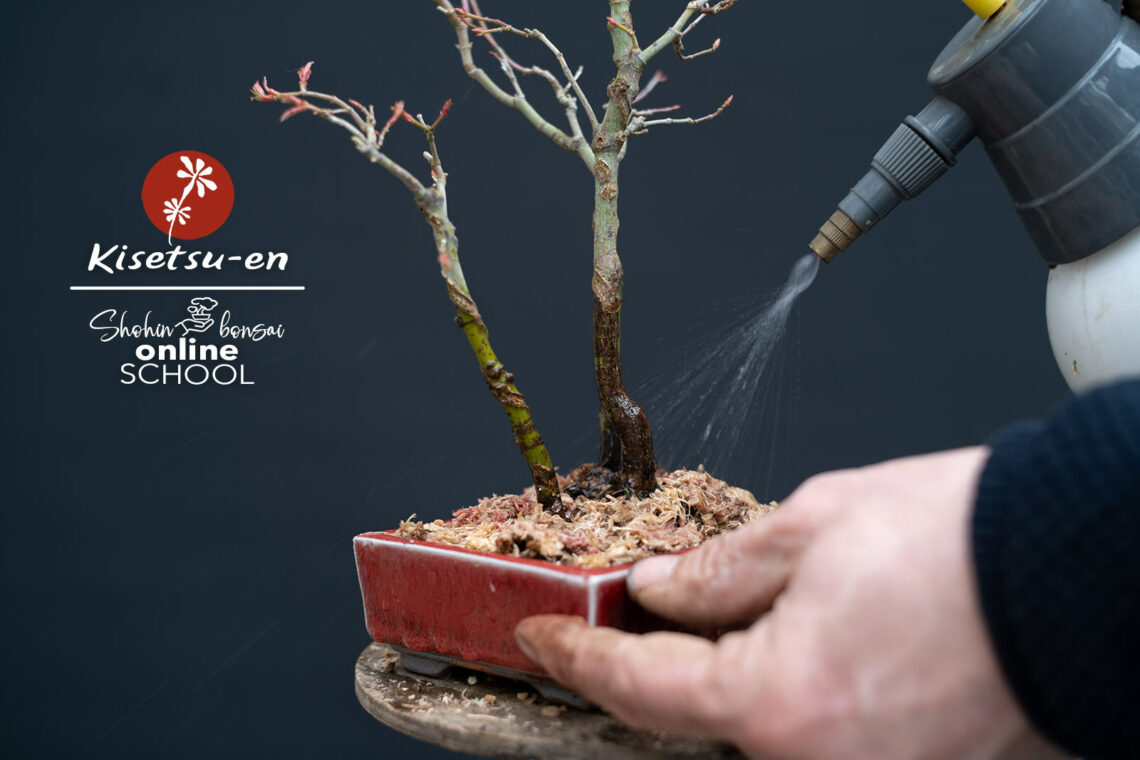
Repotting season at Kisetsu-en
Soils are floating. Chopsticks are dancing. Roots are moved. It´s the last week doing repotting at Kisetsu-en. Then all trees in need are repotted with fresh soil.
Further down the road, a few more tiny spring projects will be executed before the growing seasons leave us with pruning and trimming. It´s important to distinguish between roots in early development and established root balls. Each is treated differently.
For trees in the development stage where branches have to elongate and trunks thicken up, roots can be left to grow in a soil mixture containing a high amount of organic soil. This will support long strong roots growing, making branches grow long, adding larger leaves or longer needles, and thickening up the trunk. The right strategy for young trees in development in many cases.

Roots pruned at small Mame bonsai Acer palmatum, Japanese maple.
Trees needing focus on ramification and a more compact root ball but are still young producing strong growing roots need a different soil. The soil needed is a type that breaks the roots and diving them. Akadama and Pumice are important ingredients for the many Shohin bonsai repotted. This type of soil splits roots when they penetrated the soil and make a natural ramification of roots. At the same time, the focus has to be on reducing longer thicker roots in favour of very fine roots when repotting. At younger trees still vigorously growing roots can be reduced more than at older trees.
But knowing each species is important. Junipers don’t like more than 20-30% of their roots being removed as a thumb of rule, whereas a strong field maple can be pruned hard as long as the finer roots are preserved in a decent amount.
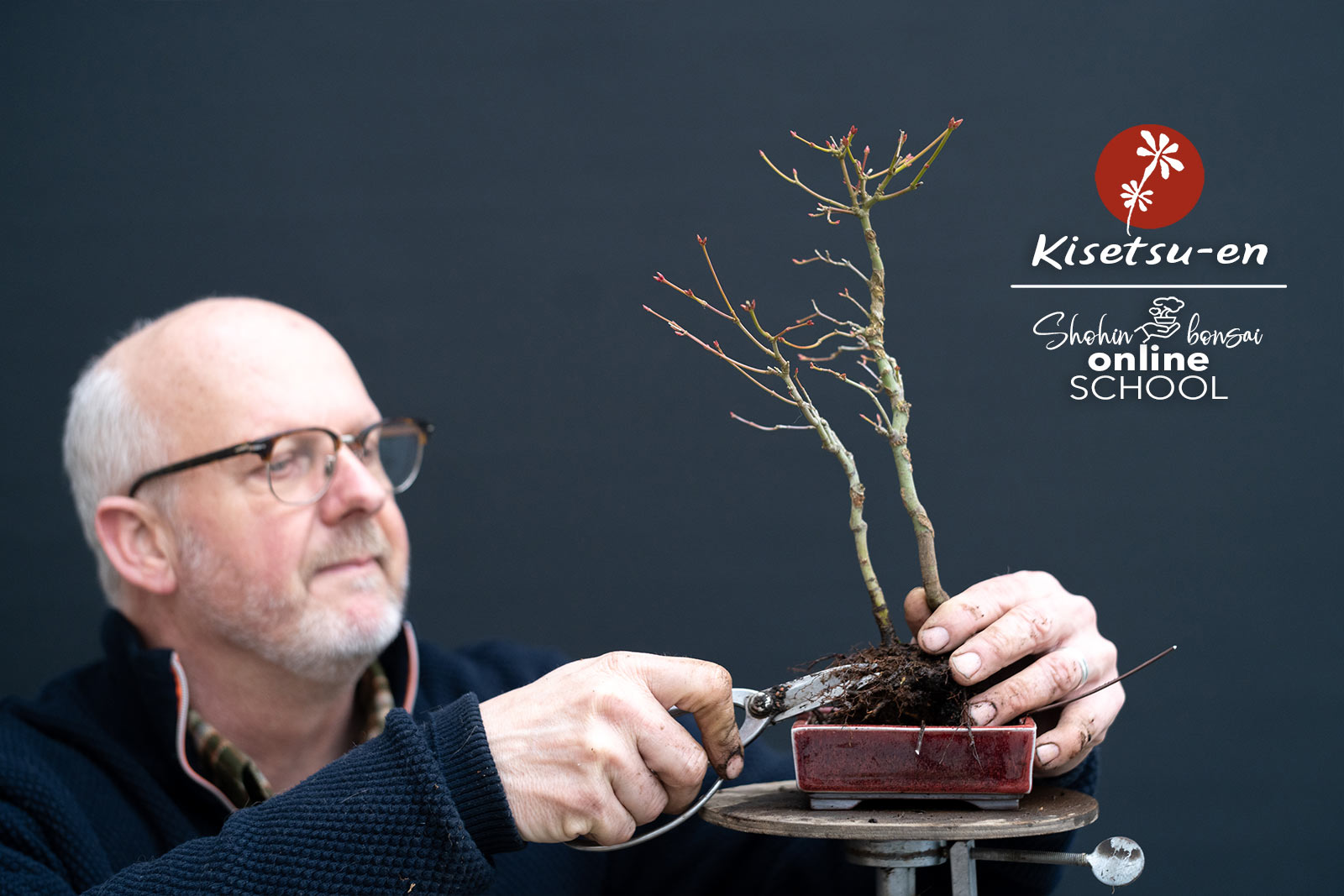
Repotting Acer palmatum into a red pot by Martine Geoffroy, France.
Finally, there are trees where the rootball is compact and mainly shows fine feathery roots. Mostly found on trees grown in a pot, and in Akadama and Pumice for example, for a longer period. Here the aim is to constantly renew the root growth when repotting. Shortening old thicker roots, and supporting the finer inner roots to take over. At old compact root balls it is advisable to go slow, and sometimes just do partial root pruning to secure the roots aren’t stressed. It all depends on the tree, its age and its health.
Q&A coming up
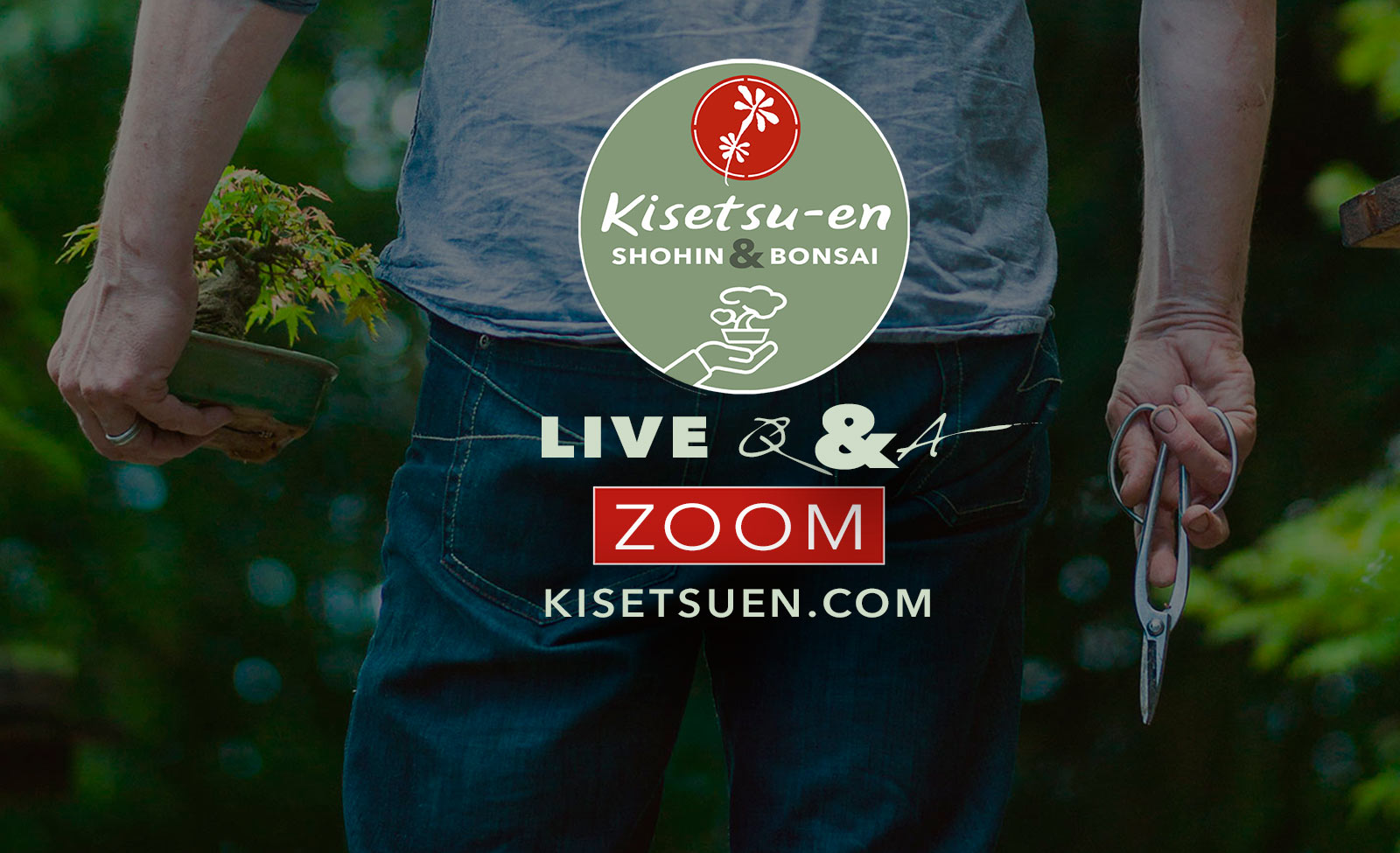
This week at BONSAI ON it´s time for our monthly Live Q&A.
Live Zoom – Thursday, March 30 at 8 PM / 20:00 (CET)
All live streams are recorded and available to watch in the video library shortly after the live stream ends. Usually within two hours.
Please notice that European summertime is effective and you may need to correct your time for this. An overview here for selected cities, and a link to a time conversion table. https://timezonewizard.com/49-crb
Copenhagen, Denmark: Thu Mar 30, 20:00 / 8:00 pm
New York City, New York, USA: Thu Mar 30, 14:00 / 2:00 pm
Quebec, Canada: Thu Mar 30, 14:00 / 2:00 pm
Canberra, Australia: Fri Mar 31, 05:00 / 5:00 am
London, UK: Thu Mar 30, 19:00 / 7:00 pm
Add to Google Calendar
Add to Office 365 Calendar
Add to Outlook Live Calendar
Add to any other calendar
Sign up for BONSAI ON LIVE and start learning bonsai today at the online learning platform.
Each week members have access to LIVE streaming education with live chat responses about the current subject. The monthly live Q&A focus on members’ questions about their own bonsai.
Choose your subscription plan and get immediate access to the large library of bonsai video tutorials. New tutorials added ongoing.
Start your bonsai education today by choosing your subscription plan.





